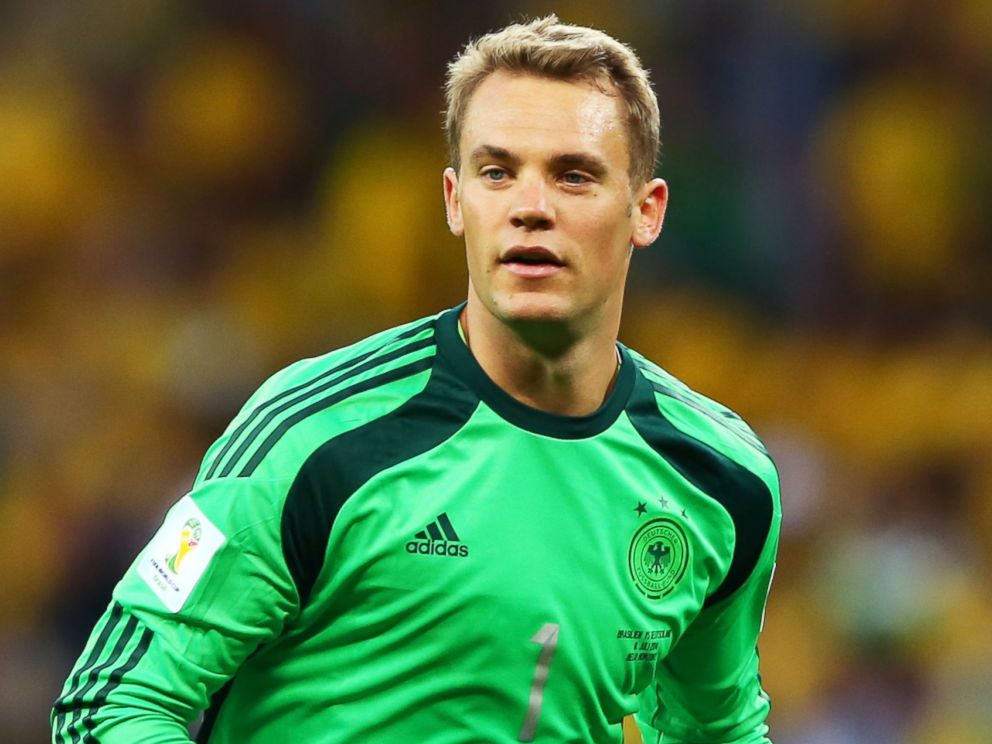
The goalkeeper’s position in the goal is determined by many factors, but these general principles can help the youth goalkeeper establish a starting position that works form him/her.
Every goalkeeper is different. Some goalkeepers boast strengths such as speed, while others are slower but have quick fast twitch muscles and great reaction time, some goalkeepers are tall, and others are shorter. Coaches, players and even parents often have different ideas on where the goalkeeper’s starting position in the goal should be and it can lead to unneeded stress on a young goalkeeper who is already under a great deal of pressure.
Understanding these principles of positioning can help the goalkeeper adapt their own starting position to suit the needs of his/her ability, the team, the situation or the environment. These principles are not intended to be steadfast rules, rather touchstones to base one’s own personal philosophy from.
German keeper Manuel Neuer is known as a “sweeper keeper” because of his ability to adopt an aggressive starting position and quickly close the distance behind the last defender in the case of a ball played in behind the defense. His size and tremendous athletic ability allow him to keep such an aggressive starting position. This gives him, his team, and his coaches the confidence to know that he can recover back to the goal in the case of a shot. Moreover, his ability to read the game and see things develop in advance also supports his aggressive approach to goalkeeping. Not all youth goalkeepers though are Manuel Neuer.
Understanding these principles of positioning will help any youth goalkeeper tailor their own starting position to best suit the demands of the game.
Goalkeepers starting position: rule of thumb.
- Ball in the offensive third – PK to 18
- Ball in the middle third – 6 to PK
- Ball in the defensive third – Goal line to 6
 Offensive Third
Offensive Third
Principle of Positioning:
When The ball is in the offensive third of the field the goalkeeper should stand between the penalty spot and the top of the 18 yard box (or slightly past it).
notes:
Read the run of play. If your team has the ball and is threatening the other team’s goal you can be more aggressive off your line. As the other team gains possession and starts to threaten you can start move back toward the penalty spot.
It is Important to never be too far away from your back line. The goalkeeper should be able to close the space in behind the last defender as quickly as possible if called upon, while also being able to get back to the goal in the event of a shot.
 Middle Third
Middle Third
Principle of Positioning:
When the ball is in the middle third, the goalkeeper should be trying to stay in line with the ball and the center of the goal, while moving between the 6 yard box and the penalty spot.
notes:
There is likely to be a lot of change of possession in the middle third but the principles of positioning remain:
- Stand between the 6 yard box and the penalty spot
- Be prepared to close the space in behind the last defender
- Be close enough to get back to the goal in the event of a shot
 Defensive Third
Defensive Third
Principle of Positioning:
When the ball is in the defensive third, the goalkeeper should be standing somewhere between the goal line and the 6 yard box.
notes:
Many factors can dictate exactly where the goalkeeper positions himself, such as:
- Where the ball is
- Who is in possession of the ball
- The direction and pace in which the ball is moving
- The body shape of the opposing team (shooter)
- The Goalkeeper’s height relative to the goal
- The Goalkeeper’s athletic ability, speed and ability to recover
- The space in behind the last defender
- The environment (windy day, wet surface, etc.)
Michael Sylvia is the current goalkeeper coach for the New York Red Bull’s Regional Development School and former men’s goalkeeper coach for Kean University.
